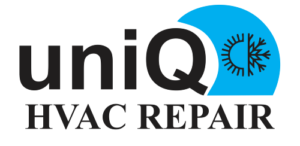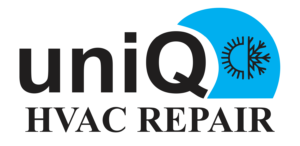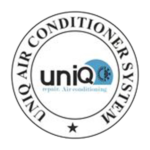HVAC Duct Repair: Improving Efficiency and Indoor Air Quality
The heating, ventilation, and air conditioning (HVAC) system is the backbone of comfort and indoor air quality in your home. However, even the most efficient HVAC systems can be compromised by damaged or leaky ductwork. In this comprehensive guide, we will explore the importance of a well-maintained duct system, common causes of HVAC duct problems, provide step-by-step troubleshooting techniques to identify issues, and offer effective solutions for HVAC duct repair. By understanding the significance of ductwork and taking proactive measures, you can ensure that your HVAC system operates efficiently, reduces energy costs, and maintains healthy indoor air quality.
Table of Contents
- The Significance of Well-Maintained Ductwork (200 words)
- Efficient airflow distribution
- Indoor air quality
- Energy efficiency
- Long-term cost savings
- Common Causes of HVAC Duct Problems (250 words)
- Duct leaks and damage
- Inadequate insulation
- Poorly designed duct systems
- Contaminants and debris
- Aging ductwork
- Troubleshooting HVAC Duct Problems (300 words)
- Step 1: Identifying Airflow Issues
- Step 2: Locating Duct Leaks and Damage
- Step 3: Assessing Duct Insulation
- Step 4: Evaluating Duct System Design
- Step 5: Checking for Contaminants
- Step 6: Gauging Ductwork Age
- Effective Solutions for HVAC Duct Repair (250 words)
- Duct sealing and patching
- Insulation replacement or upgrade
- Duct system redesign
- Duct cleaning and maintenance
- Ductwork replacement
- Preventive Measures for Maintaining Healthy Ductwork (200 words)
- Regular professional inspections
- Air filter maintenance
- Moisture control
- Sealing gaps and joints
- Proper duct design and installation
- When to Seek Professional Help for HVAC Duct Problems (200 words)
- Extensive duct damage
- Complex system redesign
- Mold or mildew issues
- Efficiency and indoor air quality concerns
- Conclusion (100 words)
- The importance of well-maintained ductwork
- The value of proactive troubleshooting and maintenance
- Ensuring efficient HVAC performance and healthy indoor air quality.
1. The Significance of Well-Maintained Ductwork
Well-maintained ductwork is vital for several reasons:
Efficient Airflow Distribution: Ducts distribute conditioned air throughout your home, ensuring even heating and cooling.
Indoor Air Quality: Leaky or damaged ducts can introduce contaminants and allergens into your living spaces, affecting indoor air quality.
Energy Efficiency: A properly sealed and insulated duct system minimizes energy loss, reducing utility costs.
Long-Term Cost Savings: Regular duct maintenance and repairs can extend the lifespan of your HVAC system, saving you money on replacements and major repairs.
2. Common Causes of HVAC Duct Problems
Several factors can lead to HVAC duct problems:
Duct Leaks and Damage: Over time, ductwork can develop leaks, holes, or damage, allowing conditioned air to escape and contaminants to enter.
Inadequate Insulation: Poorly insulated ducts can result in temperature loss or gain, reducing HVAC system efficiency.
Poorly Designed Duct Systems: Inefficient duct design can lead to airflow restrictions and imbalances.
Contaminants and Debris: Dust, mold, and debris buildup within ducts can compromise indoor air quality.
Aging Ductwork: Ducts can deteriorate with age, leading to various issues.
Now, let’s explore each of these causes in detail and discuss how to troubleshoot them.
3. Troubleshooting HVAC Duct Problems
Before seeking professional help, you can perform some troubleshooting steps to identify and potentially resolve issues:
Step 1: Identifying Airflow Issues:
- Determine if your HVAC system is not distributing air evenly, resulting in hot or cold spots in your home.
Step 2: Locating Duct Leaks and Damage:
- Inspect visible duct sections, especially in unconditioned spaces like attics or crawlspaces, for visible leaks, holes, or damage.
Step 3: Assessing Duct Insulation:
- Check if ducts are adequately insulated, especially in areas prone to temperature extremes.
Step 4: Evaluating Duct System Design:
- Assess the design of your duct system for airflow obstructions, such as sharp bends or undersized ducts.
Step 5: Checking for Contaminants:
- Investigate signs of mold, dust, or debris within ducts, which can indicate indoor air quality issues.
Step 6: Gauging Ductwork Age:
- Consider the age and condition of your ductwork, as aging ducts are more susceptible to damage and inefficiency.
By following these troubleshooting steps, you can often identify the presence of duct problems and their general nature.
4. Effective Solutions for HVAC Duct Repair
To repair HVAC duct problems, consider the following solutions:
Duct Sealing and Patching: Seal leaks and holes in ducts using appropriate mastic or tape, and patch damaged sections as needed.
Insulation Replacement or Upgrade: Improve insulation to prevent temperature loss or gain in ducts.
Duct System Redesign: If your duct system has design flaws, consider redesigning it for better airflow distribution.
Duct Cleaning and Maintenance: Schedule professional duct cleaning and maintenance to remove contaminants and ensure optimal airflow.
Ductwork Replacement: In cases of extensive damage or inefficiency, consider replacing ductwork with modern, efficient materials and design.
5. Preventive Measures for Maintaining Healthy Ductwork
To maintain healthy ductwork and avoid problems, consider these preventive measures:
Regular Professional Inspections: Schedule annual or biennial inspections with a qualified technician to identify and address emerging duct issues.
Air Filter Maintenance: Change or clean air filters regularly to reduce the accumulation of contaminants within the ducts.
Moisture Control: Maintain proper moisture levels within ducts to prevent mold growth and deterioration.
Sealing Gaps and Joints: Seal gaps and joints in ductwork to minimize air leakage and improve efficiency.
Proper Duct Design and Installation: Ensure that any new ductwork installation adheres to industry standards for optimal performance.
6. When to Seek Professional Help for HVAC Duct Problems
While many HVAC duct problems can be addressed through troubleshooting and simple maintenance, certain situations require professional assistance:
Extensive Duct Damage: If your duct system has extensive leaks or damage, it’s best to seek professional help for repairs or replacement.
Complex System Redesign: Redesigning the duct system for improved efficiency and airflow distribution is a complex task best handled by professionals.
Mold or Mildew Issues: If you suspect mold or mildew growth within your ducts, a professional can assess and remediate the problem.
Efficiency and Indoor Air Quality Concerns: If your HVAC system is inefficient or indoor air quality issues persist,
The heating, ventilation, and air conditioning (HVAC) system is the backbone of comfort and indoor air quality in your home. However, even the most efficient HVAC systems can be compromised by damaged or leaky ductwork. In this comprehensive guide, we will explore the importance of a well-maintained duct system, common causes of HVAC duct problems, provide step-by-step troubleshooting techniques to identify issues, and offer effective solutions for HVAC duct repair. By understanding the significance of ductwork and taking proactive measures, you can ensure that your HVAC system operates efficiently, reduces energy costs, and maintains healthy indoor air quality.
Table of Contents
- The Significance of Well-Maintained Ductwork (200 words)
- Efficient airflow distribution
- Indoor air quality
- Energy efficiency
- Long-term cost savings
- Common Causes of HVAC Duct Problems (250 words)
- Duct leaks and damage
- Inadequate insulation
- Poorly designed duct systems
- Contaminants and debris
- Aging ductwork
- Troubleshooting HVAC Duct Problems (300 words)
- Step 1: Identifying Airflow Issues
- Step 2: Locating Duct Leaks and Damage
- Step 3: Assessing Duct Insulation
- Step 4: Evaluating Duct System Design
- Step 5: Checking for Contaminants
- Step 6: Gauging Ductwork Age
- Effective Solutions for HVAC Duct Repair (250 words)
- Duct sealing and patching
- Insulation replacement or upgrade
- Duct system redesign
- Duct cleaning and maintenance
- Ductwork replacement
- Preventive Measures for Maintaining Healthy Ductwork (200 words)
- Regular professional inspections
- Air filter maintenance
- Moisture control
- Sealing gaps and joints
- Proper duct design and installation
- When to Seek Professional Help for HVAC Duct Problems (200 words)
- Extensive duct damage
- Complex system redesign
- Mold or mildew issues
- Efficiency and indoor air quality concerns
- Conclusion (100 words)
- The importance of well-maintained ductwork
- The value of proactive troubleshooting and maintenance
- Ensuring efficient HVAC performance and healthy indoor air quality.
1. The Significance of Well-Maintained Ductwork
Well-maintained ductwork is vital for several reasons:
Efficient Airflow Distribution: Ducts distribute conditioned air throughout your home, ensuring even heating and cooling.
Indoor Air Quality: Leaky or damaged ducts can introduce contaminants and allergens into your living spaces, affecting indoor air quality.
Energy Efficiency: A properly sealed and insulated duct system minimizes energy loss, reducing utility costs.
Long-Term Cost Savings: Regular duct maintenance and repairs can extend the lifespan of your HVAC system, saving you money on replacements and major repairs.
2. Common Causes of HVAC Duct Problems
Several factors can lead to HVAC duct problems:
Duct Leaks and Damage: Over time, ductwork can develop leaks, holes, or damage, allowing conditioned air to escape and contaminants to enter.
Inadequate Insulation: Poorly insulated ducts can result in temperature loss or gain, reducing HVAC system efficiency.
Poorly Designed Duct Systems: Inefficient duct design can lead to airflow restrictions and imbalances.
Contaminants and Debris: Dust, mold, and debris buildup within ducts can compromise indoor air quality.
Aging Ductwork: Ducts can deteriorate with age, leading to various issues.
Now, let’s explore each of these causes in detail and discuss how to troubleshoot them.
3. Troubleshooting HVAC Duct Problems
Before seeking professional help, you can perform some troubleshooting steps to identify and potentially resolve issues:
Step 1: Identifying Airflow Issues:
- Determine if your HVAC system is not distributing air evenly, resulting in hot or cold spots in your home.
Step 2: Locating Duct Leaks and Damage:
- Inspect visible duct sections, especially in unconditioned spaces like attics or crawlspaces, for visible leaks, holes, or damage.
Step 3: Assessing Duct Insulation:
- Check if ducts are adequately insulated, especially in areas prone to temperature extremes.
Step 4: Evaluating Duct System Design:
- Assess the design of your duct system for airflow obstructions, such as sharp bends or undersized ducts.
Step 5: Checking for Contaminants:
- Investigate signs of mold, dust, or debris within ducts, which can indicate indoor air quality issues.
Step 6: Gauging Ductwork Age:
- Consider the age and condition of your ductwork, as aging ducts are more susceptible to damage and inefficiency.
By following these troubleshooting steps, you can often identify the presence of duct problems and their general nature.
4. Effective Solutions for HVAC Duct Repair
To repair HVAC duct problems, consider the following solutions:
Duct Sealing and Patching: Seal leaks and holes in ducts using appropriate mastic or tape, and patch damaged sections as needed.
Insulation Replacement or Upgrade: Improve insulation to prevent temperature loss or gain in ducts.
Duct System Redesign: If your duct system has design flaws, consider redesigning it for better airflow distribution.
Duct Cleaning and Maintenance: Schedule professional duct cleaning and maintenance to remove contaminants and ensure optimal airflow.
Ductwork Replacement: In cases of extensive damage or inefficiency, consider replacing ductwork with modern, efficient materials and design.
5. Preventive Measures for Maintaining Healthy Ductwork
To maintain healthy ductwork and avoid problems, consider these preventive measures:
Regular Professional Inspections: Schedule annual or biennial inspections with a qualified technician to identify and address emerging duct issues.
Air Filter Maintenance: Change or clean air filters regularly to reduce the accumulation of contaminants within the ducts.
Moisture Control: Maintain proper moisture levels within ducts to prevent mold growth and deterioration.
Sealing Gaps and Joints: Seal gaps and joints in ductwork to minimize air leakage and improve efficiency.
Proper Duct Design and Installation: Ensure that any new ductwork installation adheres to industry standards for optimal performance.
6. When to Seek Professional Help for HVAC Duct Problems
While many HVAC duct problems can be addressed through troubleshooting and simple maintenance, certain situations require professional assistance:
Extensive Duct Damage: If your duct system has extensive leaks or damage, it’s best to seek professional help for repairs or replacement.
Complex System Redesign: Redesigning the duct system for improved efficiency and airflow distribution is a complex task best handled by professionals.
Mold or Mildew Issues: If you suspect mold or mildew growth within your ducts, a professional can assess and remediate the problem.
Efficiency and Indoor Air Quality Concerns: If your HVAC system is inefficient or indoor air quality issues persist,


 Please enter your name and phone number below, We will get back to you soon.
Please enter your name and phone number below, We will get back to you soon.